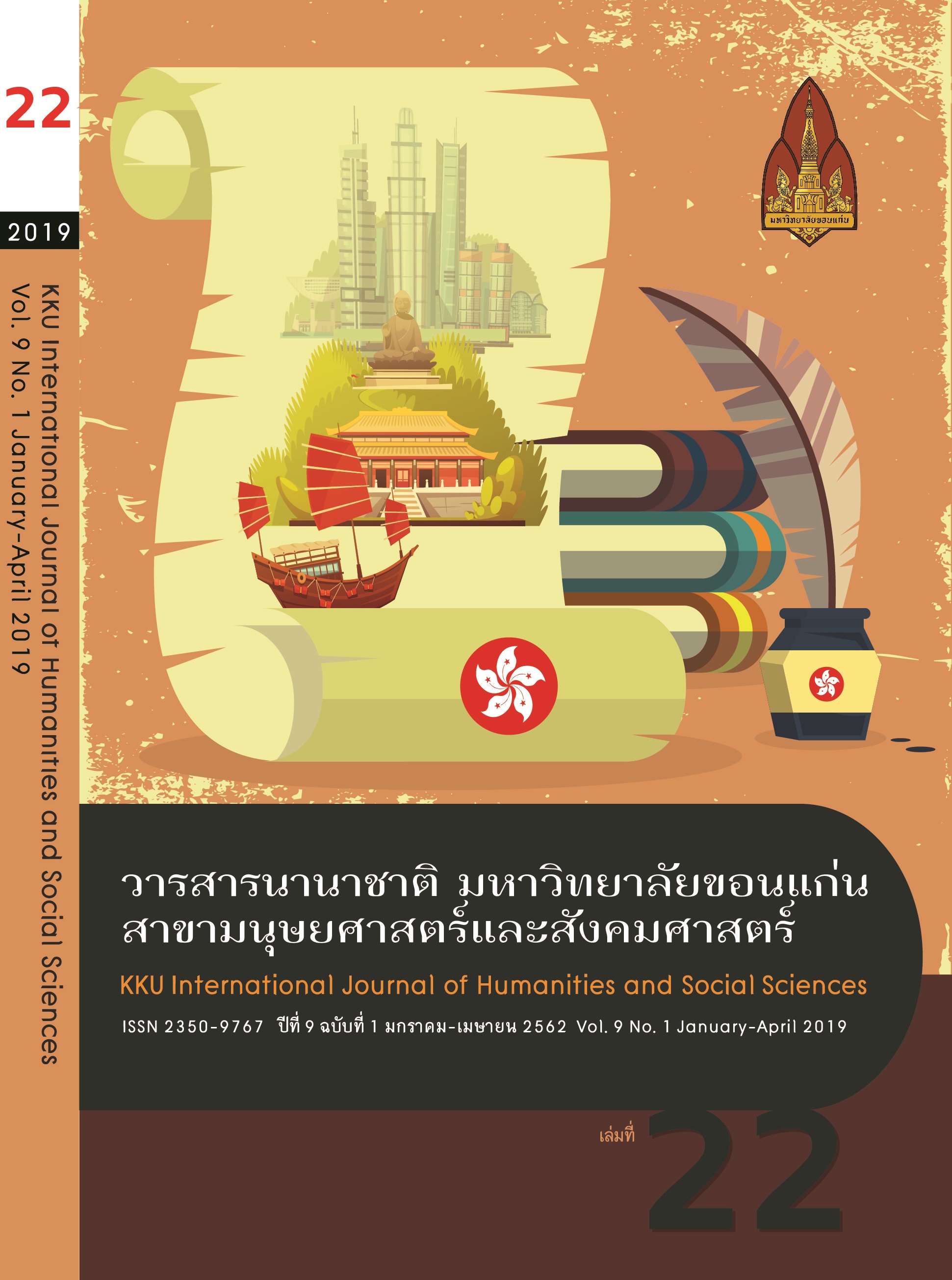Syntactic and Semantic Property of "Si" in Northeastern Thai Dialect
Main Article Content
Abstract
This study aims to analyze syntactic and semantic property of “si” in various constructions in order to examine the type of grammatical category of “si”, the meaning of “si” as well as the constraint on occurrence in those constructions.
The study found that “si” could occur in 3 syntactic constructions including ; 1) it could occur at the initial of action verbs and stative verbs 2) it could occur at the initial and final of auxiliary verbs divided into 2 types such as prototype and non -prototype auxiliary verbs. These types could be separated as follows : aspectual auxiliaries and epistemic auxiliaries. 3) it could occur between two verbs. In term of semantic,it was found that “si” is an unrealistic marker expressing the unactual situations in the semantic domains of possibility, probability, volition, future, condition, habituality, experience, prediction, objective and inception
Article Details
References
จินดารัตน์ จรัสกำจรกูล. (2536). เงื่อนไขทางอรรถศาสตร์ของการปรากฏของ จะ ระหว่างกริยาวลี. คณะอักษรศาสตร์ จุฬาลงกรณ์มหาวิทยาลัย.
นววรรณ พันธุเมธา. (2527). ไวยากรณ์ไทย. พิมพ์ครั้งที่ 2. กรุงเทพฯ : รุ่งเรืองสาส์นการพิมพ์.
อภิญญา สร้อยธุหร่ำ. (2528). การศึกษาการใช้ภาษาที่แสดงเวลาอนาคตในภาษาอังกฤษและภาษาไทย. คณะอักษรศาสตร์ จุฬาลงกรณ์มหาวิทยาลัย.
อุปกิตศิลปสาร. (2532). หลักภาษาไทย. กรุงเทพฯ : ไทยวัฒนาพานิช.
Bybee, J. 1987. Modality in Grammar and Discoure. Amsterdam : John Benjamins Publishing Company.
Chung, S. and Timberlake, A. 1985. Tense and Mood. Language Typology and Syntactic Description. Cambridge University Press.
De Haan, F. Irrealis : Fact or Fiction? (Online). Available from : https://www.u.arizona.ed.u//edu.pdf.


